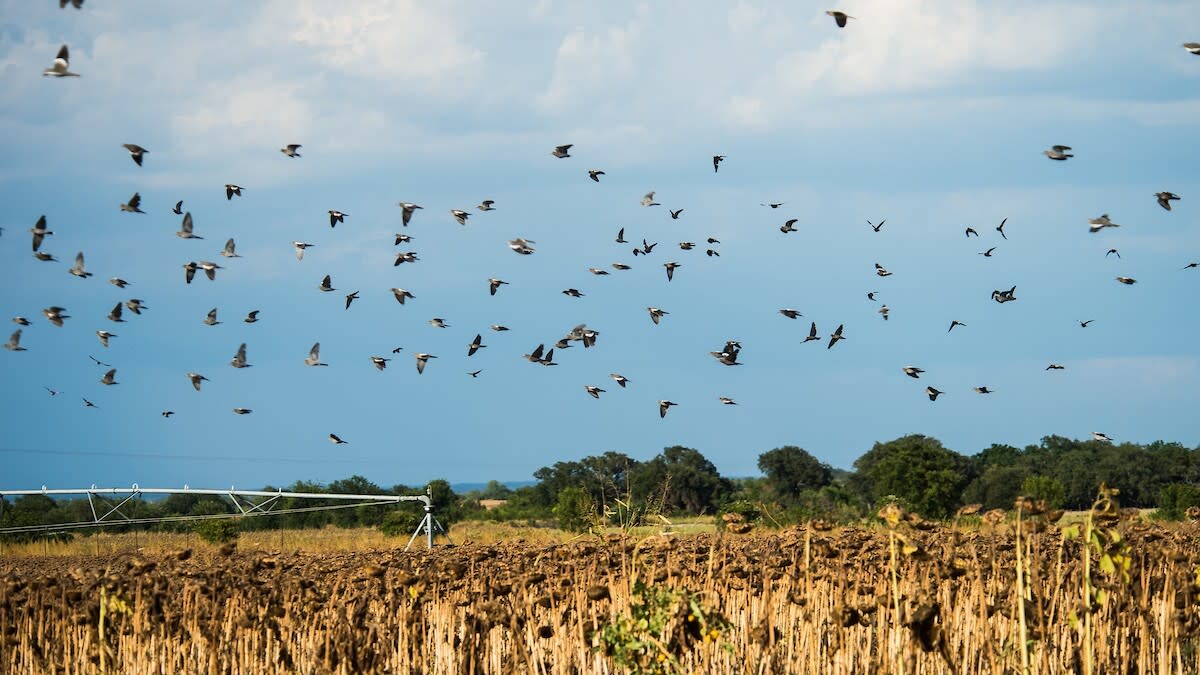
For many hunters, the Sept. 1 dove opener signals the official beginning of fall.
A vision of a wide field ringed with orange caps flashes across the mind’s eye. Retrievers rush for downed doves, and shots echo off the leaves of trees just starting to turn color.
For those of us not fortunate enough to hunt over a field of sunflowers or millet, here are three overlooked dove hotspots where you can fill your vest.
Gravel Bars Like most birds, doves need small stones to grind the seeds stored in their crop. Hunters often spot doves picking their gizzard grit along road edges or in commercial gravel pits, but those are usually not legal hunting locations. Gravel bars in streams are productive yet under-hunted areas that mimic this habitat.
Late summer drought exposes many finer stones in these riverbeds, and doves use the newly exposed islands or extended shores to drink, swallow pebbles, and rest in the cooler temps. Rivers also act as an excellent right-of-way in many states to access public land that most dove hunters never think to walk. Take a page out of a deer and duck hunter’s book and follow the water to hard-to-reach public parcels. Check your onXmaps for property lines and consult your state’s regulations on shooting below the high-water mark before you begin hunting.
Strip Mine Reclamation Sites A long history of extractive industries has forever changed the Appalachian landscape. While we will likely never see native American Chestnuts towering on the tops of these ridges again, state agencies have bought and repurposed much of this abused land over the last 50 years and are opening thousands of acres to public recreation. While not as extensive in as the public ground in Western states, reclaimed lands are opening up and offering dove hunting opportunities.
These shaved mountaintops are now covered in grasses and quick-growing trees that provide natural cover and food for doves. The still-loose soil is perfect for the ground-feeding birds and their scratching, and varying ages of trees offer roosting options. Depending on elevation, look to hunt these locations in the evenings as birds move up from the hollows and ravines to feed at last light before heading into the canopy.
Ponds Often the perfect location for mid-day flights, water sources are well-known places to set up for doves, particularly when a nearby grain field is full. But don’t only focus on farm ponds. Take some time to pour over maps and locate ponds in the timber or in transition areas from the timber to a meadow.
These locations may take more effort to reach than riding your four-wheeler to the farm pond, but you likely won’t see any other hunters. Think of your early season wood duck spots and you’ll find doves. Like any game animal, doves can become pressured. Until the migrating birds fly through your area, finding out-of-the-way water, roosting, and food locations can lead to more doves in your vest. Look for ponds with distinctive tree lines that birds follow to the water. Bushy shrubs surrounding the pond can provide good cover for you, as well as a food source for the doves.
Regardless of where you find doves this season, be sure to take full advantage of your harvest. Try out Danielle Prewett’s dove with citrus-miso glaze for a sweet and savory preparation or Wade Truong’s Hatch chile dove cooked on the grill.
Feature image via Tosh Brown.







Conversation